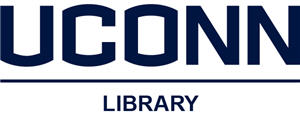Document Type
Article
Disciplines
Medicine and Health Sciences | Social and Behavioral Sciences
Abstract
Hippocampal theta (6–10 Hz) and gamma (25–50 Hz and 65–100 Hz) local field potentials (LFPs) reflect the dynamic synchronization evoked by inputs impinging upon hippocampal neurons. Novel experience is known to engage hippocampal physiology and promote successful encoding. Does novelty synchronize or desynchronize theta and/or gamma frequency inputs across the septotemporal (long) axis of the hippocampus (HPC)? The present study tested the hypothesis that a novel spatial environment would alter theta power and coherence across the long axis. We compared theta and gamma LFP signals at individual (power) and millimeter distant electrode pairs (coherence) within the dentate gyrus (DG) and CA1 region while rats navigated a runway (1) in a familiar environment, (2) with a modified path in the same environment and (3) in a novel space. Locomotion in novel space was related to increases in theta and gamma power at most CA1 and DG sites. The increase in theta and gamma power was concurrent with an increase in theta and gamma coherence across the long axis of CA1; however, there was a significant decrease in theta coherence across the long axis of the DG. These findings illustrate significant shifts in the synchrony of entorhinal, CA3 and/or neuromodulatory afferents conveying novel spatial information to the dendritic fields of CA1 and DG targets across the long axis of the HPC. This shift suggests that the entire theta/gamma-related input to the CA1 network, and likely output, receives and conveys a more coherent message in response to novel sensory experience. Such may contribute to the successful encoding of novel sensory experience.
Recommended Citation
Penley, Stephanie C.; Hinman, James R.; Long, Lauren L.; Markus, Etan J.; Escabí, Monty A.; and Chrobak, James J., "Novel Space Alters Theta and Gamma Synchrony Across the Longitudinal Axis of the Hippocampus." (2013). Open Access Author Fund Awardees' Articles. 15.
https://digitalcommons.lib.uconn.edu/libr_oa/15



Comments
Originally published in :
Front Syst Neurosci. 2013 Jun 25;7:20. doi: 10.3389/fnsys.2013.00020. eCollection 2013.
- PMID:
- 23805081
- [PubMed]
- PMCID:
- PMC3691506
Free PMC Article Copyright © 2013 Penley, Hinman, Long, Markus, Escabí and Chrobak. This is an open-access article distributed under the terms of the Creative Commons Attribution License, which permits use, distribution and reproduction in other forums, provided the original authors and source are credited and subject to any copyright notices concerning any third-party graphics etc.